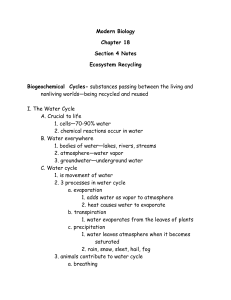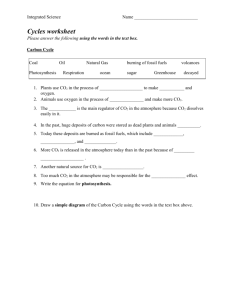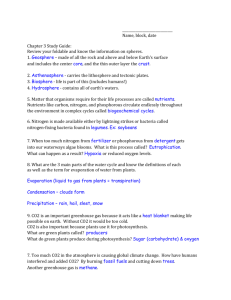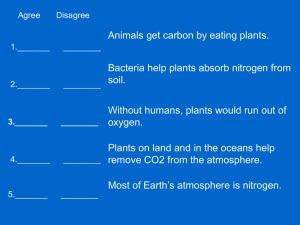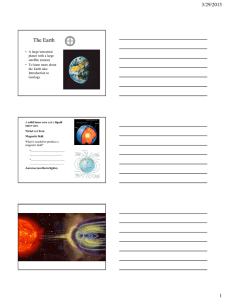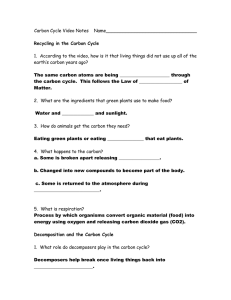Biogeochemical Cycles: Water, Carbon, Nitrogen, Phosphorus
advertisement
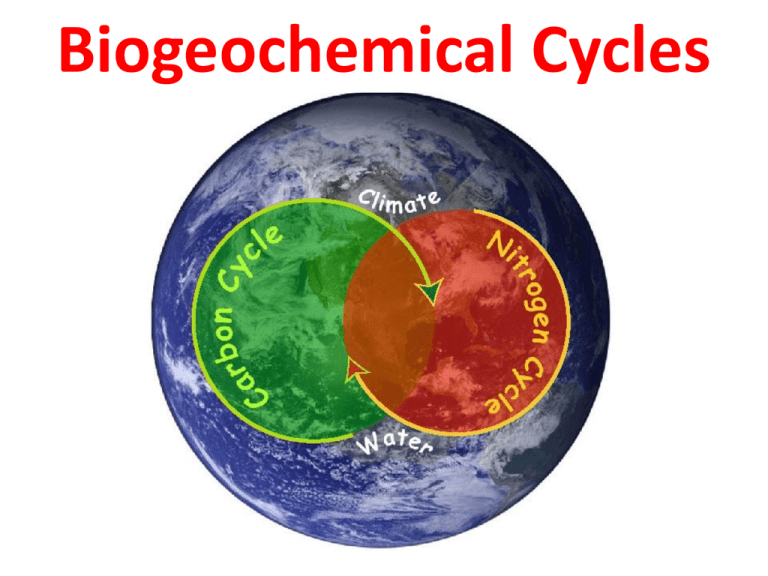
Biogeochemical Cycles • Defined: Movement of water through the Earth and its atmosphere • 75% of the Earth is covered in water • Less than 1% is drinkable. • Most water is salty or frozen Water Cycle Pathway . .. .. .. .. . . . .. . . . . . .. . ... . . . . . • Precipitation: sleet, or hail falls when water drops Evaporation: Water vapor Rain, starts Heat snow, changes to cool…condensation water from a liquid occursto a gas heavy Transpiration: Water evaporates from the leaves of plants • become Condensation: process where water vapor turns into a • Runoff: runs called down hill into rivers, lakes, streams, oceans… throughWater openings stomata liquid • Infiltration: Water soaks into the soil and collects as groundwater Oxygen Cycle O2 O2 • Autotrophs: Release O2 into atmosphere by photosynthesis • Most life needs O2 for cellular respiration – Creates ATP (energy) for cells CO2 CO2 CO2 CO2 CO2 Carbon (C) Cycle CO CO 2 CO2 CO2 2 CO2 CO2 CO2 CO2 CO2 CO2 CO2 CO2 CO2 glucose Carbon glucose glucoseCO2 glucoseglucose glucose • Human Contribution • Decomposers Plants Animals – Release excess CO2 into atmosphere when fossil fuels (coal, oil, – Obtain Absorb Glucose CO passed photosynthesis up feeding the food onchain dead organisms naturalglucose gas) areby burned for energy 2 for – Release CO glucose into (C in atmosphere their ) after photosynthesis – Carbon Cycle is released out of balance 2 exhaled 6H 12O6waste Phosphorus (P) Cycle P P P P P • Phosphorus Step 3: needed to Consumers make ATP, ingest P • Step DNA,4: lipids • Decomposers Problem: No obtain P phosphorus in when feed on atmosphere • the Stepdead. 1: • Step 5: Phosphorus Decomposers released by release P of weathering within rocks waste into soil • back Step 2: or water Producers • Cycle absorbrepeats P through their roots Phosphorus (P) Cycle P P P P P P • Human Contribution – Adding excess P from fertilizers – P washes into lakes, etc… – Excess P causes extreme plant & algae growth Nitrogen (N) Cycle N2 N N N N Usable N Nitrogen fixation N Usable N • Nitrogen Step 4: needed Producers to build nucleic absorb N acids (DNA/RNA) • through Problem:their roots Nitrogen in • Step 5: atmosphere (N2) Consumers is unusable ingest N • Step 1: Bacteria through the in soil convert N2 food chain into usable • Step 6: forms Decomposers • Step 2: N Bacteria obtain from absorb dead usable N • organisms… Step 3: Bacteria return soil releaseNNto waste in their into air waste Nitrogen (N) Cycle O2 ONO O N2 N N NO O2 NON2 NO NO O2 N2 N NO O2 O • How does lightning help? – Energy breaks atmospheric nitrogen into Nitrogen oxide – Nitrogen oxide falls in rain to soil Review 1) Name and define the 6 stages of the water cycle. 2) How is oxygen released into the atmosphere? 3) In which cellular process is oxygen removed and used from the atmosphere? 4) What are the 4 major types of organic molecules? 5) In which cellular process is carbon dioxide released into the atmosphere? 6) How are humans disrupting the carbon cycle? 7) Which objects release phosphorus over time? 8) How are humans disrupting the phosphorus cycle? 9) Which organisms help convert gaseous nitrogen into a usable form of nitrogen in the nitrogen cycle? 10) How do plants obtain nitrogen? 11) Of the major molecules that we have studied this year, which ones contain nitrogen and/or phosphorous?
